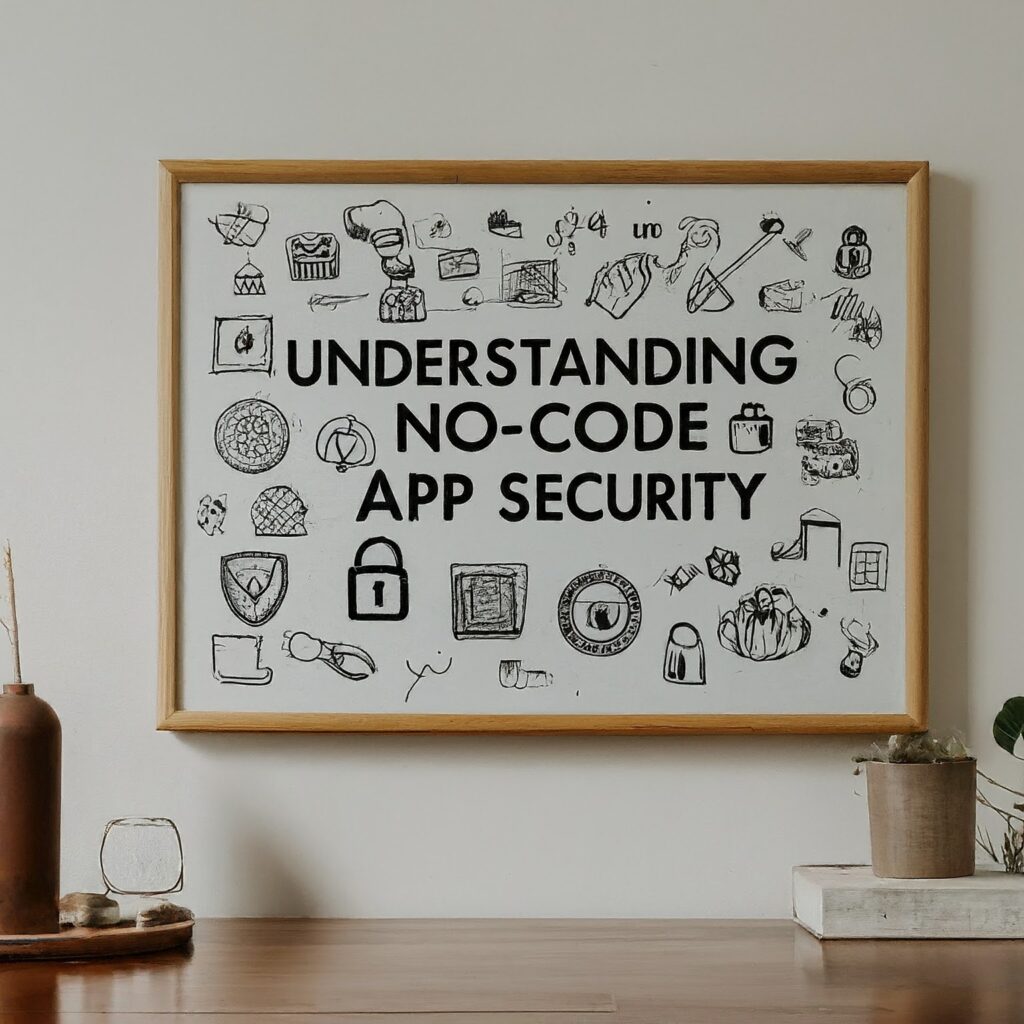The rise of no-code platforms has revolutionized the app development landscape, enabling non-developers to create applications with ease. While these platforms offer immense flexibility and speed in development, they also introduce specific security risks that users must be aware of. Understanding these risks and how to mitigate them is crucial for ensuring that your no-code applications remain secure. This blog will explore the most common security risks associated with no-code platforms and provide actionable tips for securing no-code applications.
What is No-Code App Development?
No-code platforms allow users to build applications without writing code. They provide visual development tools, such as drag-and-drop interfaces and pre-built templates, that make app creation accessible to those without a technical background. Examples of popular no-code platforms include Bubble, Adalo, and Webflow. These platforms are particularly appealing for small businesses, startups, and individuals looking to deploy applications quickly without the need for a full development team.
However, the convenience of no-code platforms comes with its own set of challenges, particularly in the realm of security. As these platforms become more widely used, understanding no-code app security becomes increasingly important.
Common Security Risks in No-Code Platforms
- Data Breaches and Insecure Data Storage
One of the most significant risks associated with no-code app security is the potential for data breaches. No-code platforms often provide built-in databases and storage solutions, but these can be vulnerable if not configured correctly. Improper handling of sensitive data, such as personal information, can lead to unauthorized access and breaches.
Mitigation Tip: Always ensure that any data stored within a no-code application is encrypted, both in transit and at rest. Use platform-provided encryption tools and ensure proper access controls are in place to restrict who can access sensitive data.
- Lack of Control Over Security Configurations
No-code platforms offer limited control over the underlying infrastructure and security configurations. Users often rely on the platform provider to implement security measures. This dependency can lead to potential vulnerabilities, especially if the platform does not update or patch security flaws promptly.
Mitigation Tip: Choose a no-code platform that regularly updates its security protocols and provides transparency about its security measures. It’s essential to stay informed about any security updates or patches released by the platform provider and apply them immediately.
- Weak Authentication Mechanisms
Many no-code applications come with default authentication options, such as basic username and password setups. However, these options may not provide sufficient security, especially if the passwords are weak or the platform does not support multi-factor authentication (MFA).
Mitigation Tip: Implement strong authentication mechanisms for your no-code applications. Whenever possible, use MFA and encourage users to create complex, unique passwords. Additionally, consider using third-party authentication providers that offer enhanced security features.
- Injection Attacks
Injection attacks, such as SQL injection or cross-site scripting (XSS), are common security threats that can affect no-code applications. These attacks occur when malicious code is injected into an application through user inputs, exploiting vulnerabilities in the app’s code.
Mitigation Tip: To protect against injection attacks, ensure that all user inputs are validated and sanitized. Use platform features or third-party tools that automatically scan for and mitigate potential injection vulnerabilities. It’s also crucial to conduct regular security assessments to identify and fix any weaknesses in your app.
- Insufficient Data Validation and Sanitization
No-code platforms often lack robust data validation and sanitization controls, making applications vulnerable to various types of attacks, including injection attacks and data corruption. Without proper validation, attackers can input malicious data that can compromise the application’s integrity.
Mitigation Tip: Implement comprehensive data validation and sanitization rules to ensure that only safe and expected data is processed by the application. Leverage built-in platform tools or third-party services to enhance data validation and reduce the risk of malicious data entry.
- Third-Party Integrations and Plugins
No-code platforms frequently rely on third-party integrations and plugins to extend functionality. While these integrations offer convenience, they can also introduce new security vulnerabilities if they are not properly vetted or regularly updated.
Mitigation Tip: Be selective about the third-party integrations and plugins you use in your no-code applications. Ensure that they come from reputable sources and are regularly updated to patch any known security vulnerabilities. Additionally, monitor these integrations for any unusual activity that might indicate a security issue.
- Lack of Regular Security Audits
Many users of no-code platforms assume that the platform itself handles all security aspects, leading to a lack of regular security audits. This complacency can result in unnoticed vulnerabilities and outdated security configurations that attackers can exploit.
Mitigation Tip: Regularly conduct security audits of your no-code applications. These audits should include vulnerability scanning, penetration testing, and reviewing the application’s security settings. If the no-code platform offers security audit tools, make full use of them.
- Inadequate Access Controls
Without proper access controls, unauthorized users can gain access to sensitive parts of the application, leading to data breaches or other security incidents. Many no-code platforms offer basic access control options, but these may not be sufficient for all use cases.
Mitigation Tip: Implement robust access controls tailored to the specific needs of your application. Use role-based access control (RBAC) to ensure that users only have access to the data and functionality necessary for their role. Regularly review and update these controls as your application evolves.
Conclusion
No-code platforms have democratized application development, making it accessible to a broader audience. However, with this accessibility comes a responsibility to understand and manage the security risks associated with these platforms. By being aware of the common security risks and taking proactive steps to mitigate them, you can ensure that your no-code applications remain secure and reliable.
Key Takeaways
- No-code app security is a critical consideration for anyone using no-code platforms.
- Common risks include data breaches, weak authentication mechanisms, injection attacks, and inadequate access controls.
- Mitigating these risks requires a combination of strong data encryption, robust authentication, regular security audits, and careful management of third-party integrations.
- Understanding and addressing these security challenges is essential for building secure, reliable, and successful no-code applications.
By following these guidelines and remaining vigilant about security, you can leverage the full potential of no-code platforms while keeping your applications safe from potential threats.






